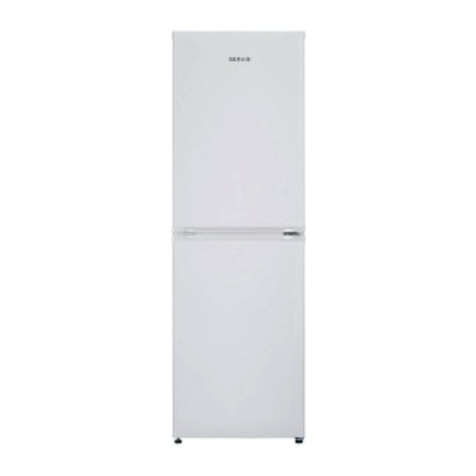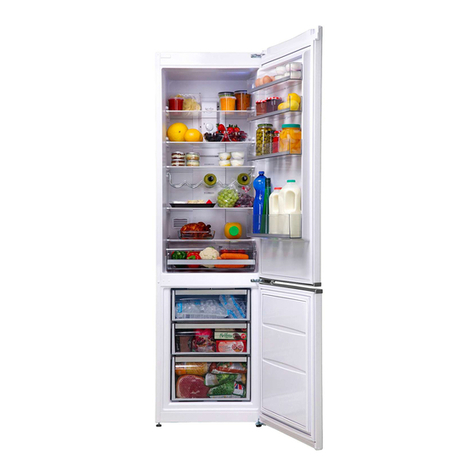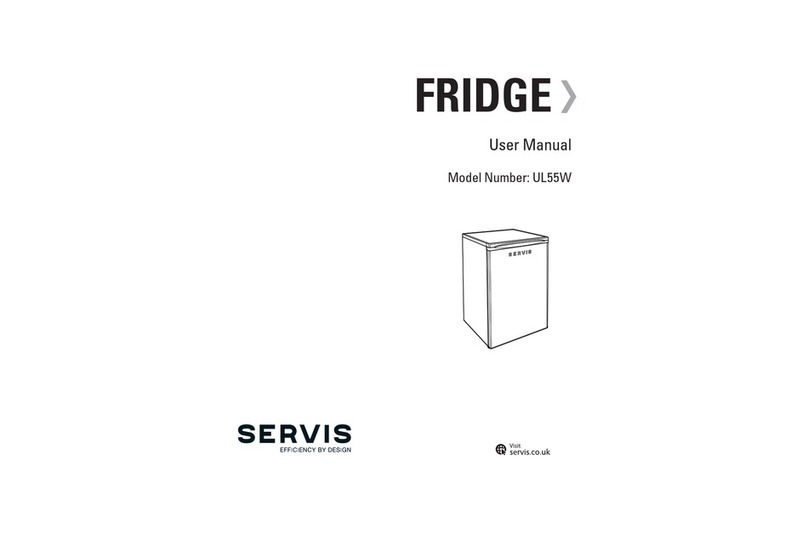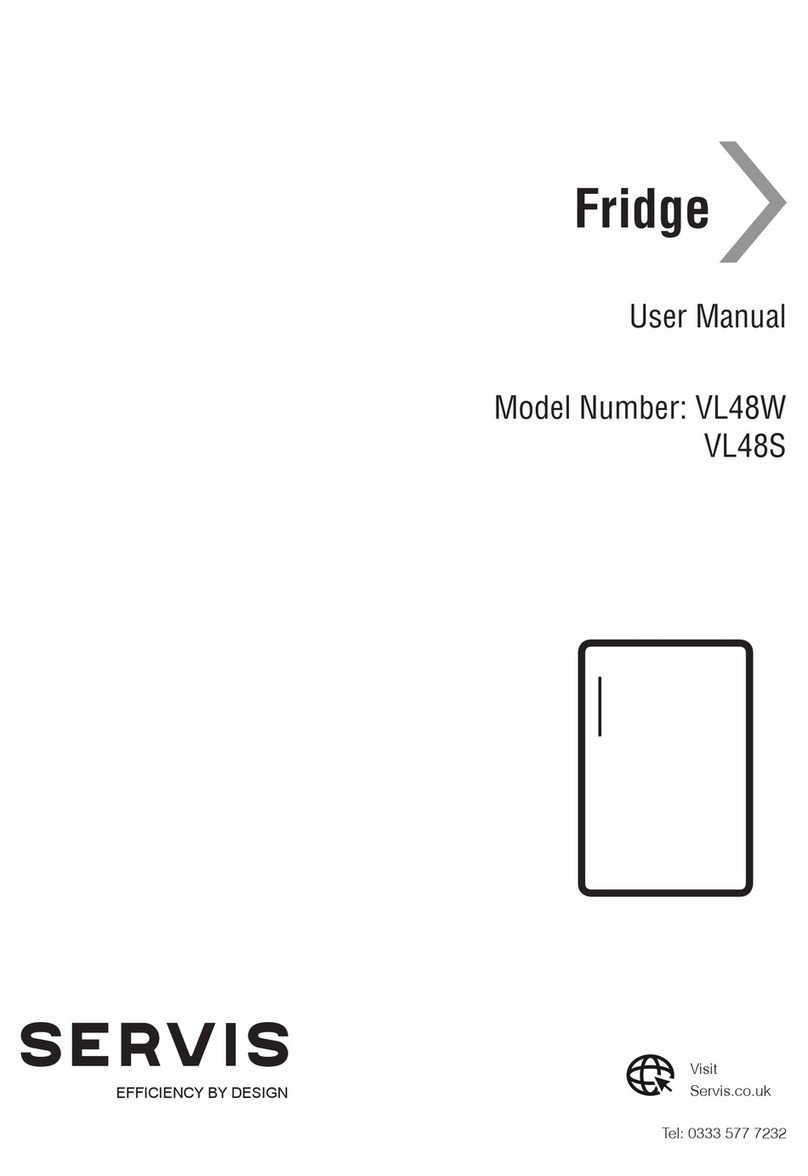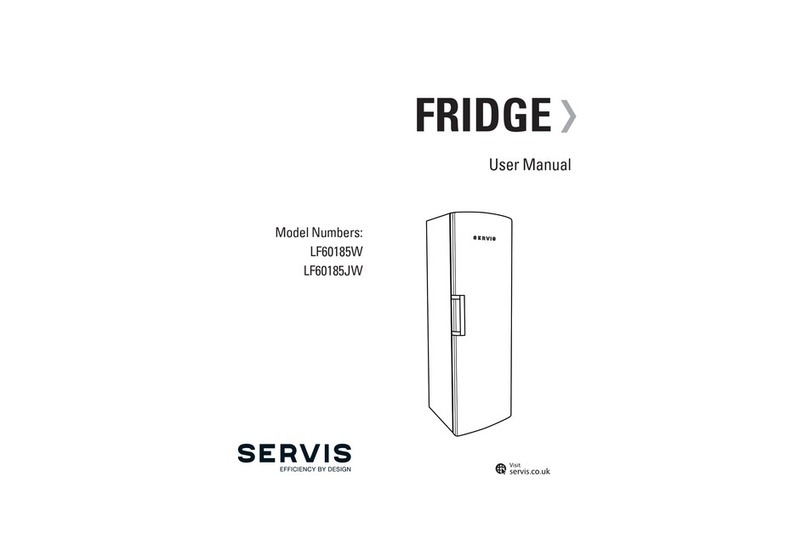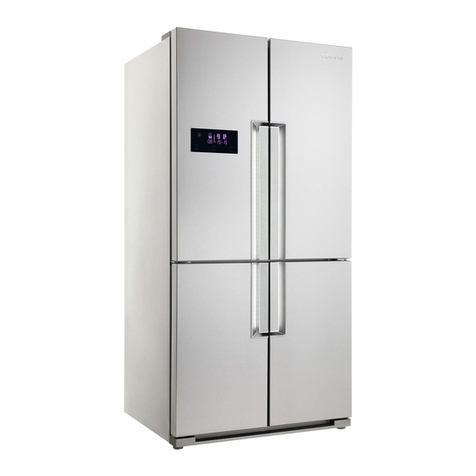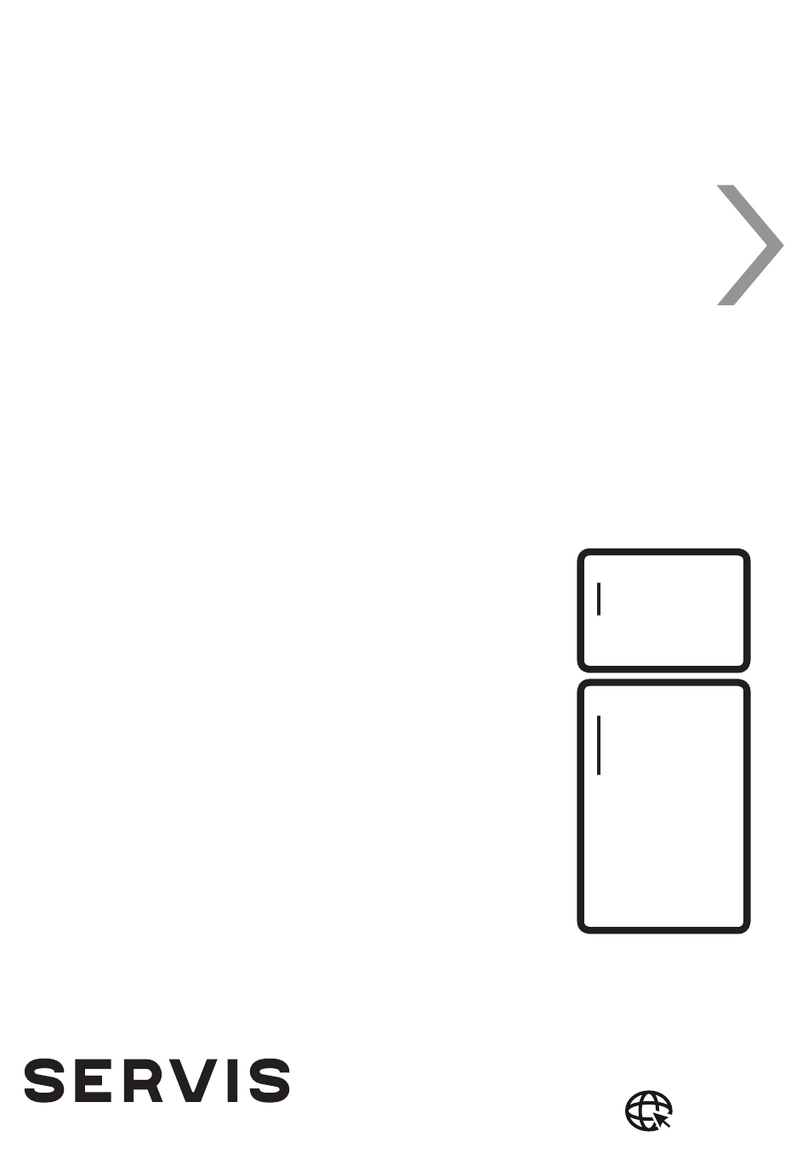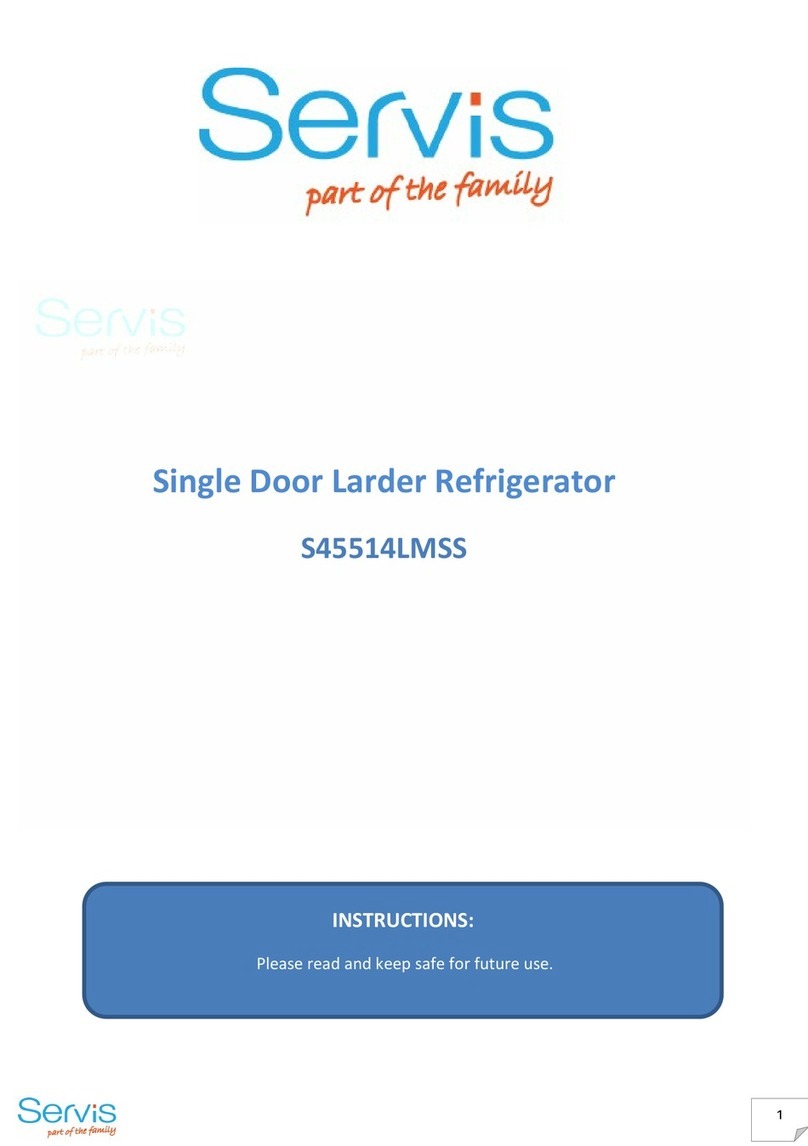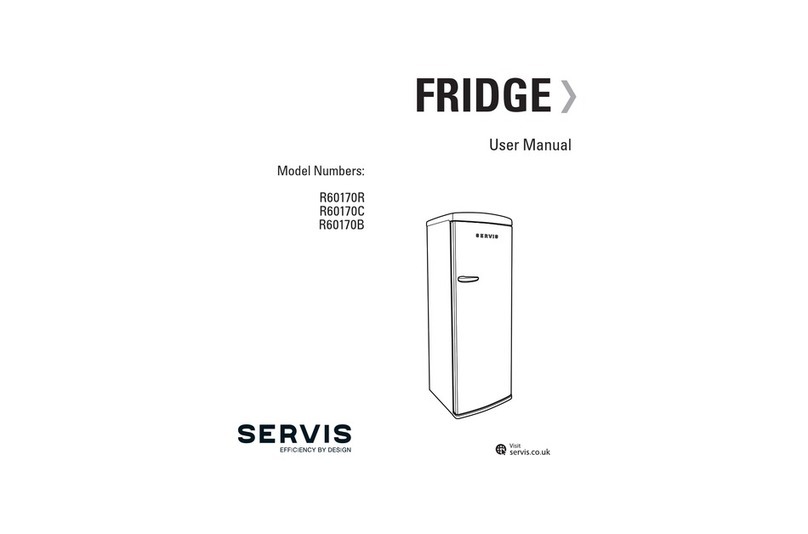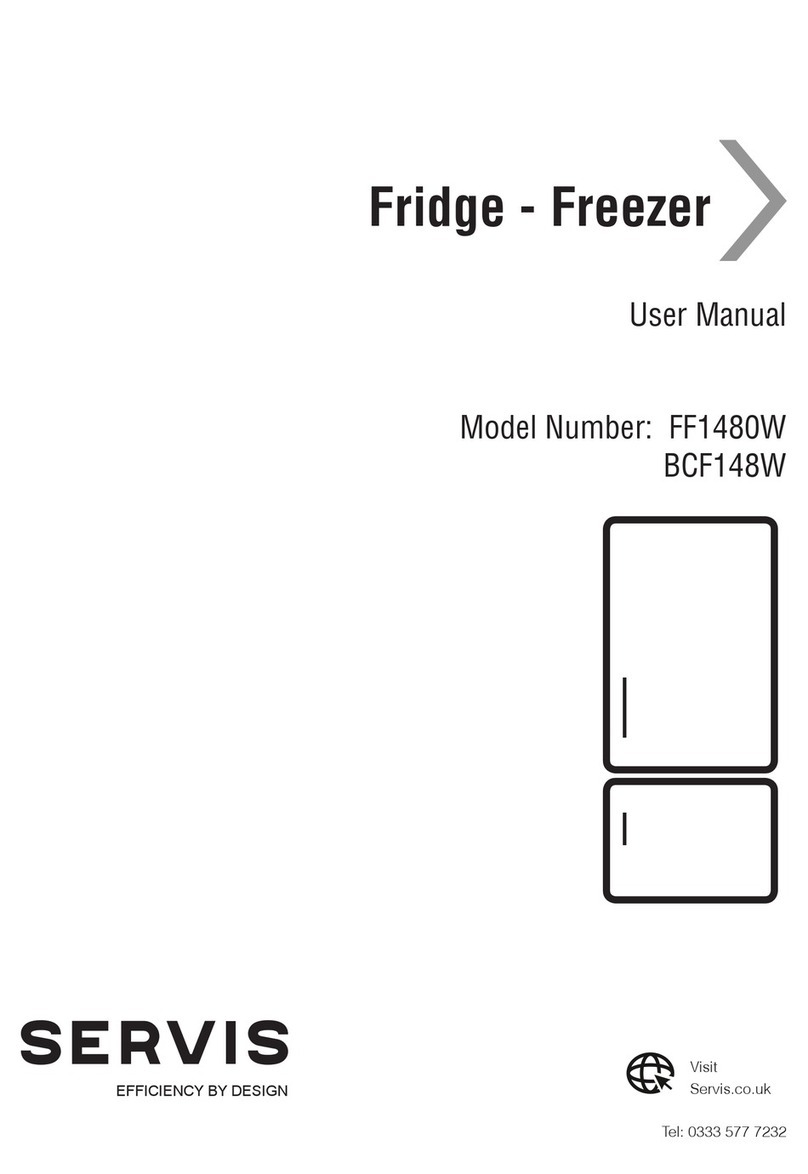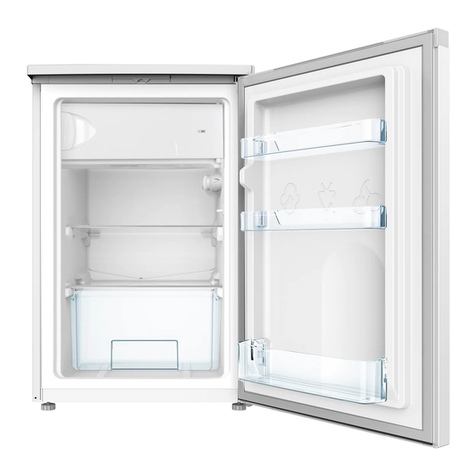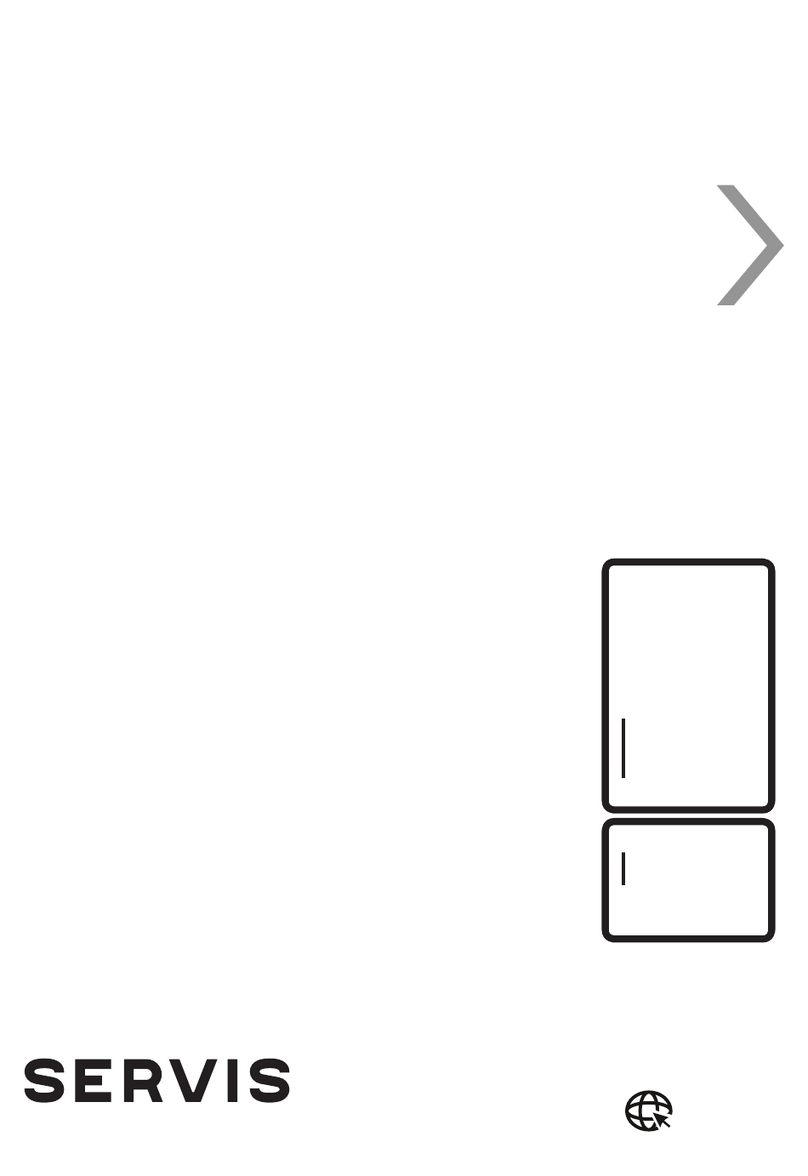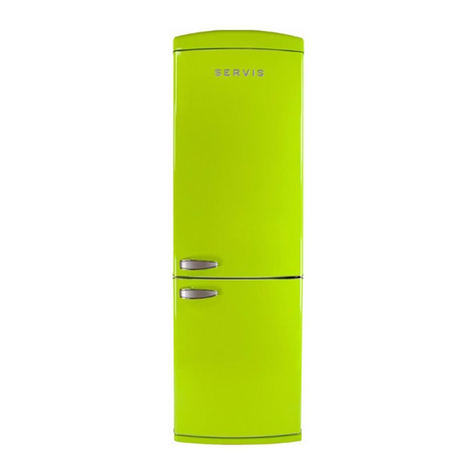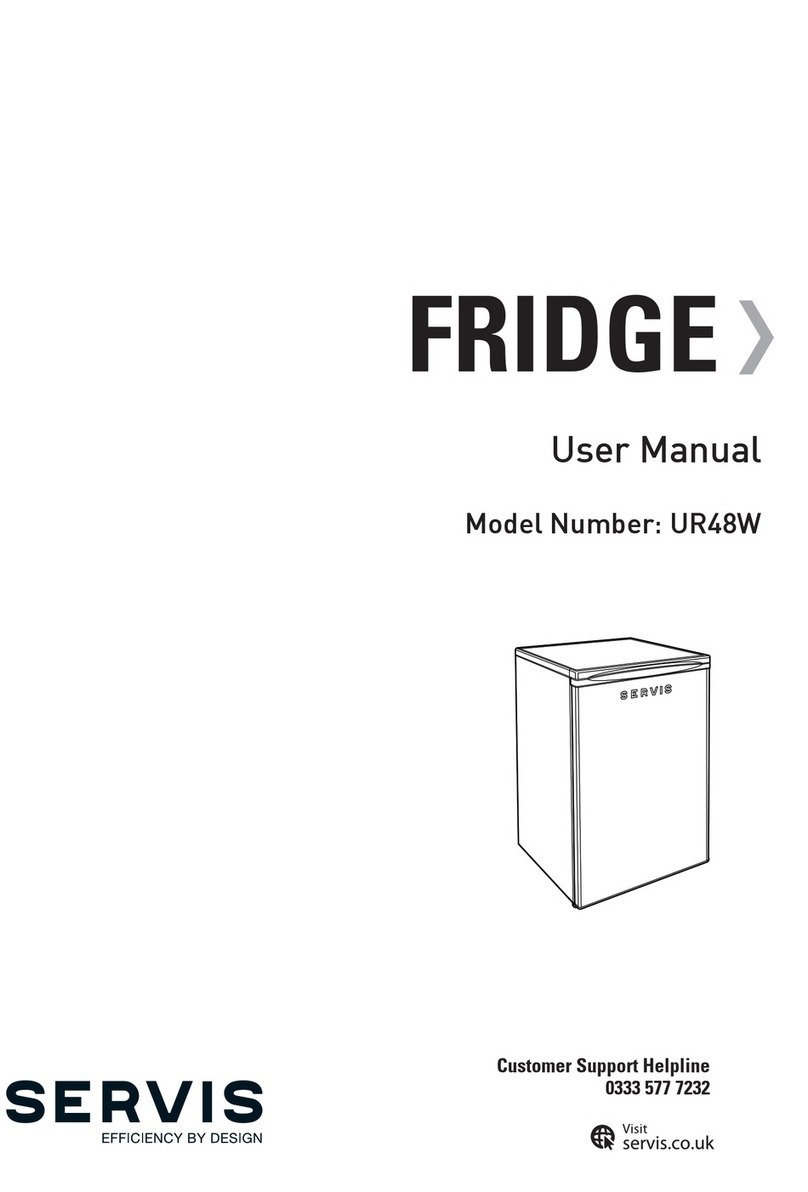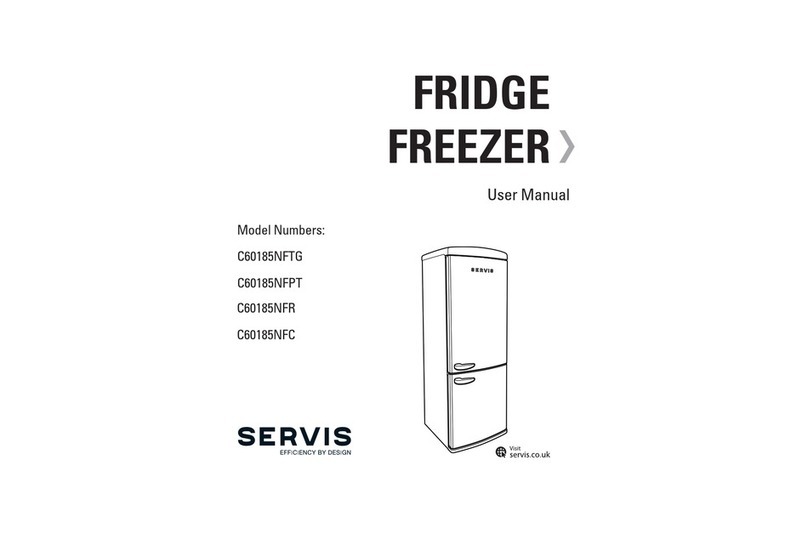
IMPORTANT! DO NOT connect your appliance to the electricity supply until all
Packing and transit protectors have been removed.
•Leave to stand for at least 4 hours before switching on to allow
compressor oil to settle if transported horizontally
•If you are discarding an old refrigerator with a lock or latch fitted to the
door, disable the lock/latch, ensure that it is left in a safe condition to
prevent the entrapment of young children
•This fridge/freezer must only be used for its intended purpose i.e., the
storing and freezing of edible foodstuff
•Do not dispose of the appliance on a fire
•Take care not to damage, the cooling circuit, if damaged immediately
ventilate the room where the appliance is situated
•This appliance should not be used in an unheated, cold room i.e. garage,
conservatory, annex, shed, out-house etc.
•Ensure that the plug remains readily accessible
•Failure to observe these instructions may invalidate your right to free
service during the guarantee period
•We recommend a separate switch be used to ensure easy switch on / off.
•Children should be supervised to ensure that they do not play with the
appliance
•This appliance is intended to be used in a household environment
•Do not use mechanical devices or other means to accelerate the
defrosting process
IMPORTANT WARNING:
Keep ventilation openings, in the appliance enclosure or
In the built-in structure clear of obstruction.
Make sure that mains cable is not caught under the appliance
During and after carrying / moving the appliance, to avoid the mains
cable becoming cut or damaged.
